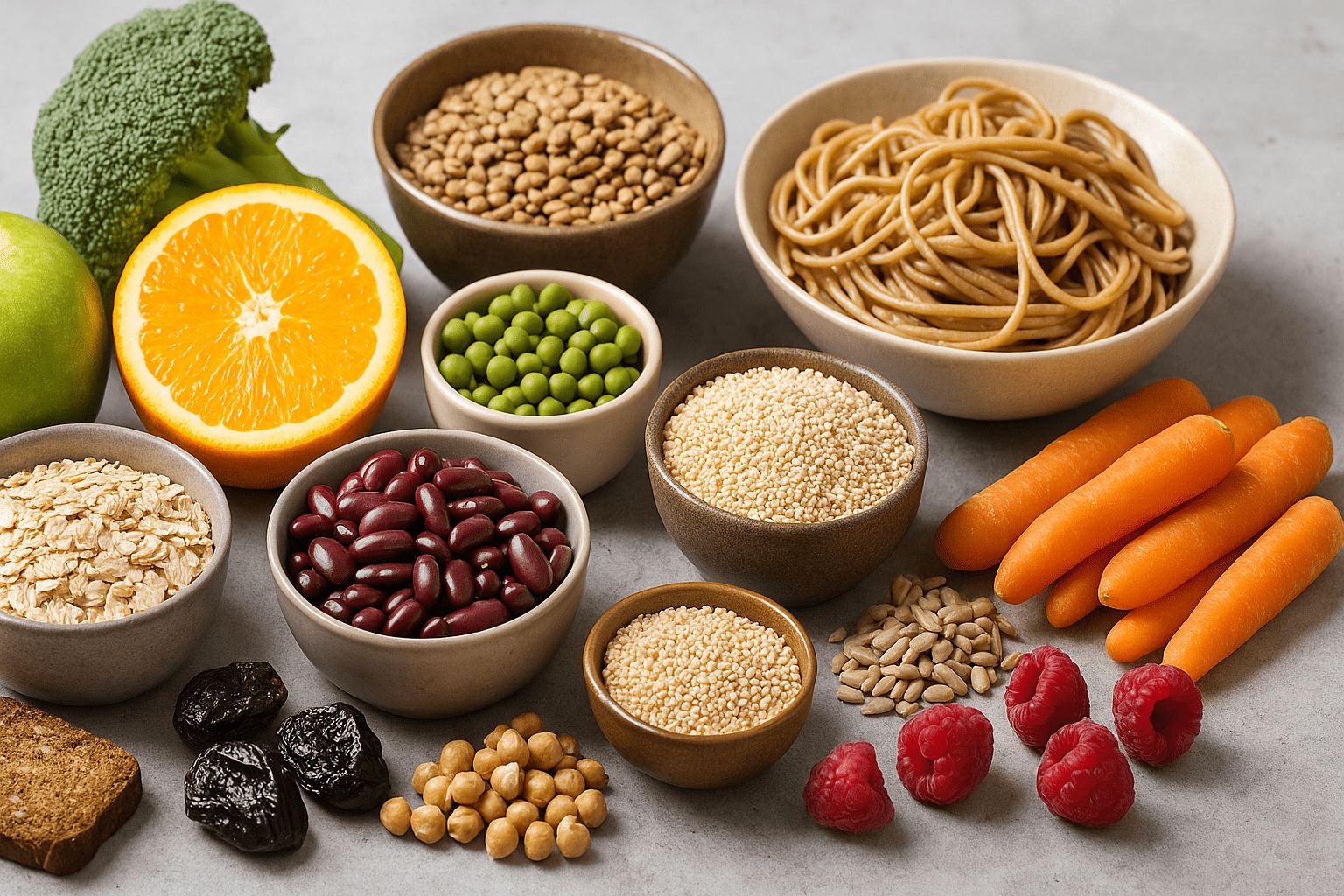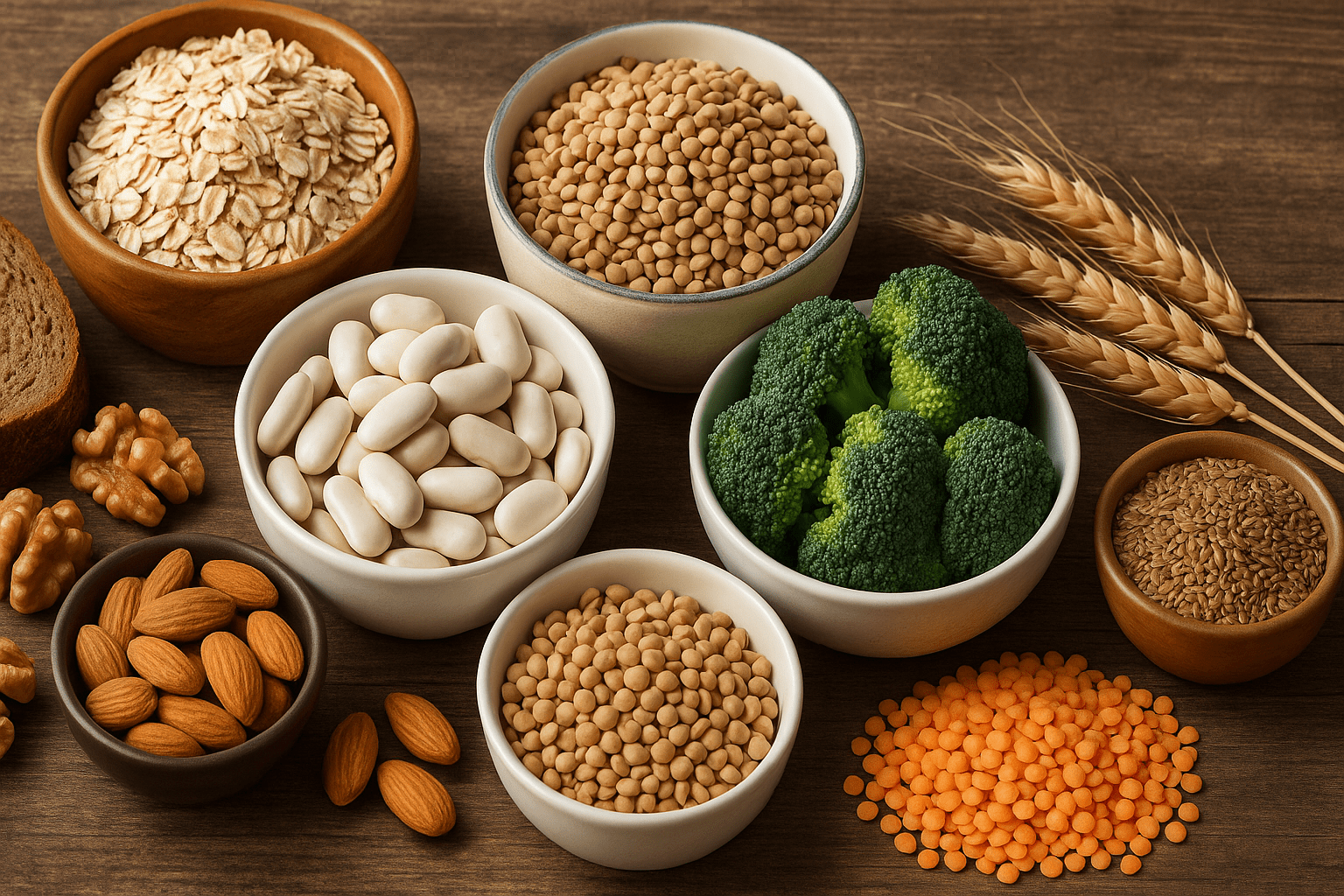Fibermaxxing Explained: Is This Viral Nutrition Trend Actually Healthy?
Fibermaxxing is suddenly everywhere in the wellness conversation, people are calling it a shortcut for better digestion, reduced bloating and even steadier energy throughout the day. At its core, it is the idea of dramatically increasing your daily fiber intake with the goal of improving gut health fast. It sounds simple, even harmless. After all, fibre is known to be healthy. But when something spreads this quickly, it is fair to ask if it is truly beneficial or just another extreme trend waiting to backfire.
What Is Fibermaxxing and Why Is It Trending?
At its core, fibermaxxing is about pushing fiber intake far beyond the typical recommendation. Most people barely get 15 grams of fiber a day. Fibermaxxing fans might aim for 40, 50 or even 60 grams. The intensity is what sets it apart. The traditional high fiber diet trend from years ago encouraged people to gradually eat more whole foods. Fibermaxxing often skips the cautious part and leans toward results fast.
The rise in gut health culture makes this trend believable. People are more comfortable now openly talking about digestion, bloating and bowel habits online. A dramatic before-and-after story performs well on the internet, so this type of trend spreads quickly.
Social media also rewards anything trackable. Fiber intake is easy to measure, so people treat it like a daily score. It feels actionable and progress-focused. Some even see it as a challenge.
The problem? Many people jump straight from low fiber eating to high fiber extremes without giving the gut time to adjust. That is where things start to go wrong.
Fibermaxing Benefits
Supporters say that the changes can be powerful. Fiber improves digestive flow, which helps with regular bowel movements and reduces the heavy feeling after meals. It can also slow how quickly food is digested, preventing energy crashes and sudden hunger.
Many say they experience:
- Less bloating over time
- More stable appetite and fewer cravings
- Improved bathroom consistency
- Feeling lighter after meals instead of overly full
Some people also notice improvements in cholesterol and blood sugar stability. Since fiber slows digestion and helps regulate nutrient absorption, this is a reasonable benefit.
It is also important to note the emotional side. When digestion feels steady and predictable, stress goes down. For some, fibermaxxing is more about mental ease than aesthetics. Still, not everyone experiences these improvements right away, especially if they increase fiber too aggressively with no water or diversity.
How to Increase Daily Fiber Intake Without Going Too Far
There is a right way to do this, and it does not involve completely changing your diet overnight. The safest approach is slow and steady. The gut only adapts well when it has time.
A structured way to do this:
- Add just one fiber-rich food per meal at first
- Drink more water before increasing your fiber targets
- Focus on real food over fiber supplements whenever possible
- Spread fiber through the day to avoid front-loading it in one meal
Here is how small changes can look:
Typical Choice | Small Shift |
White rice | Switch to half white, half quinoa or barley |
Plain yogurt | Stir in chia or flax seeds |
Crackers/snack | Swap for sliced pear or berries with nuts |
Plain sandwich | Add chickpeas or lentil soup on the side |
This is how to increase daily fiber intake in a controlled way — slow enough for the microbiome to adjust. People who rush tend to quit early because the discomfort overshadows the progress.
Fiber for Gut Health, The Real Science Behind the Trend
The gut bacteria inside your body rely on fiber. It is not just “good for digestion.” It is food for the microbes that protect your gut lining, support your immune system and potentially affect mood regulation.
When gut bacteria break down fiber, they produce compounds that reduce inflammation and strengthen intestinal health. That is why fiber for gut health is such a major focus. The issue is that most Western diets starve these bacteria. Fibermaxxing is often treated like a rescue mission.
But there is something influencer culture does not emphasize enough: fiber quality and variety matter more than aggressive quantity. 50 grams of fiber from five different plants is much better than 50 grams from the same food every day. A diverse microbiome needs diverse fuel.

Is Fibermaxxing Safe for Everyone?
This trend is not automatically safe just because it sounds natural. Going from a low fiber diet to a high fiber diet overnight can trigger intense bloating, sharp cramps and full-body discomfort. Hydration plays a massive role too. Fiber absorbs water, so if you increase fiber without increasing water, digestion can slow down instead of speed up.
It is also not ideal for people in the middle of gut issues or flare ups from conditions like IBS, unless under professional guidance. A sudden load of fermentable fiber could make things temporarily worse.
Some warning signs you are overdoing it:
- Stomach feels rock hard or overly full
- Digestive pain lasts more than a couple of hours
- No appetite, but heavy internal pressure
- Constant burping or gas without relief
So is fibermaxxing safe? It can be — if done gradually, intentionally and supported with water, variety and awareness. It is the speed, not the concept itself, that typically causes problems.
The Smart and Sustainable Way to Try It
The healthiest version of this trend looks surprisingly calm. It respects the body instead of shocking it.
A smart structure might include:
- Increase fiber intake by around 5 grams per week
- Drink at least two extra glasses of water daily during that increase
- Combine both soluble and insoluble fiber sources
- Focus on whole foods first, then consider supplementing later if needed
A simple overview of daily fiber ranges:
Lifestyle | Daily Fiber Range |
Lower movement | 20–25 grams |
Moderately active | 25–35 grams |
Advanced or intentional fiber focus | 40–50 grams |
This keeps fibermaxxing from turning into an extreme short-term experiment. It nudges you toward consistency instead of shock value.
Fibermaxxing vs Traditional Nutrition Advice: Key Differences
Traditional nutrition advice encourages hitting roughly 25 to 30 grams of fiber a day, mostly from whole foods, over time. It is just one piece of a balanced eating approach. There is no pressure or performance behind it.
Fibermaxxing often introduces competitiveness, more fiber, faster, stronger. That energy is part of what makes it spread online, but it also leads people to treat it like a number-chasing game instead of a gradual dietary improvement.
There is value in paying attention to fiber. It is one of the most overlooked nutrients in modern diets. But most long-term nutrition experts would prioritize consistency, digestion comfort and food diversity over any metric.
Realistic Meal and Snack Examples
Here is how a high but not overwhelming fiber day might look:
Breakfast
Yogurt with mixed berries, chia seeds and one slice of whole-grain toast
Lunch
Salmon or tofu bowl with rice or quinoa, avocado, leafy greens and edamame
Snack
Roasted chickpeas or sliced apple with nut butter
Dinner
Whole grain pasta or quinoa with tomato-based sauce, beans and sautéed vegetables
This is not restricting; it is simply layered. Fiber works best when it feels natural, not forced.

Conclusion
Fibermaxxing can support digestion, appetite control and overall gut resilience, but only when approached with patience and intention. It works best for people who increase their fiber intake gradually, focus on whole foods and listen closely to how their body responds. It is not meant to be a fast hack or a competition, but a tool that can support long-term health when used wisely.
For anyone interested in exploring a more guided, longevity-focused approach to nutrition and gut health optimization, programs like the Longevity Program at Lifespire offer a personalized and science-driven path forward.


